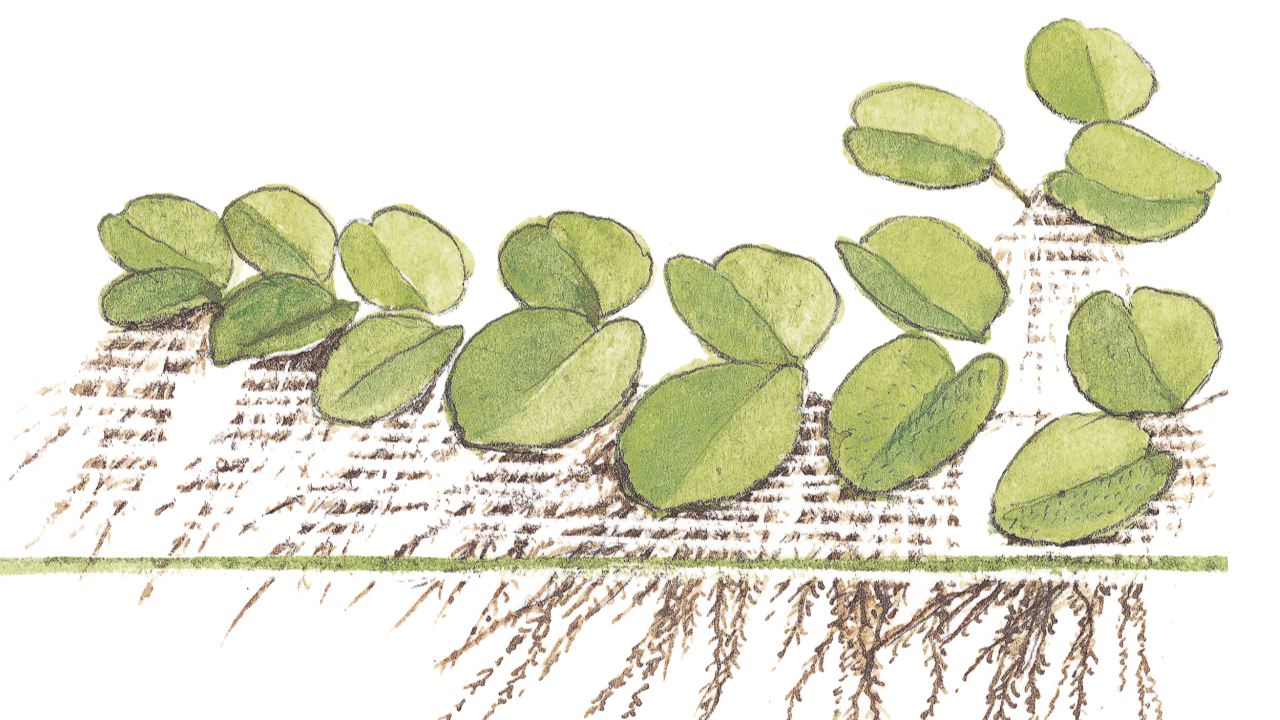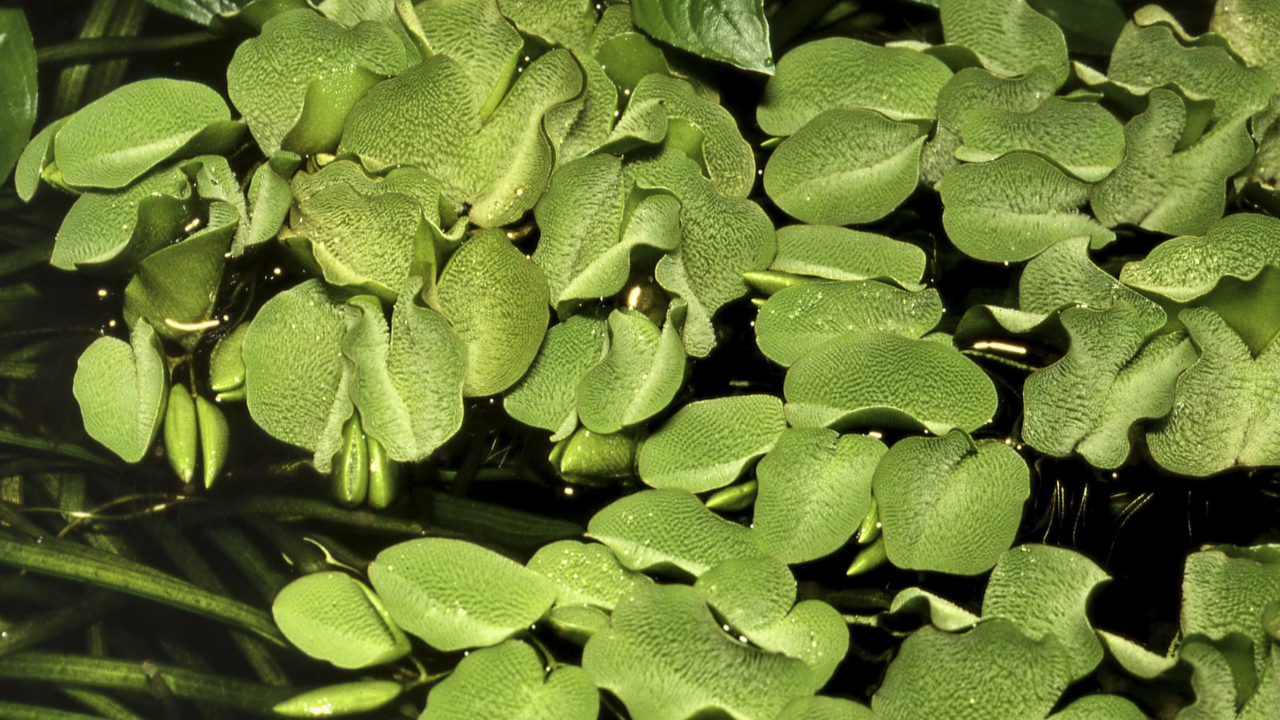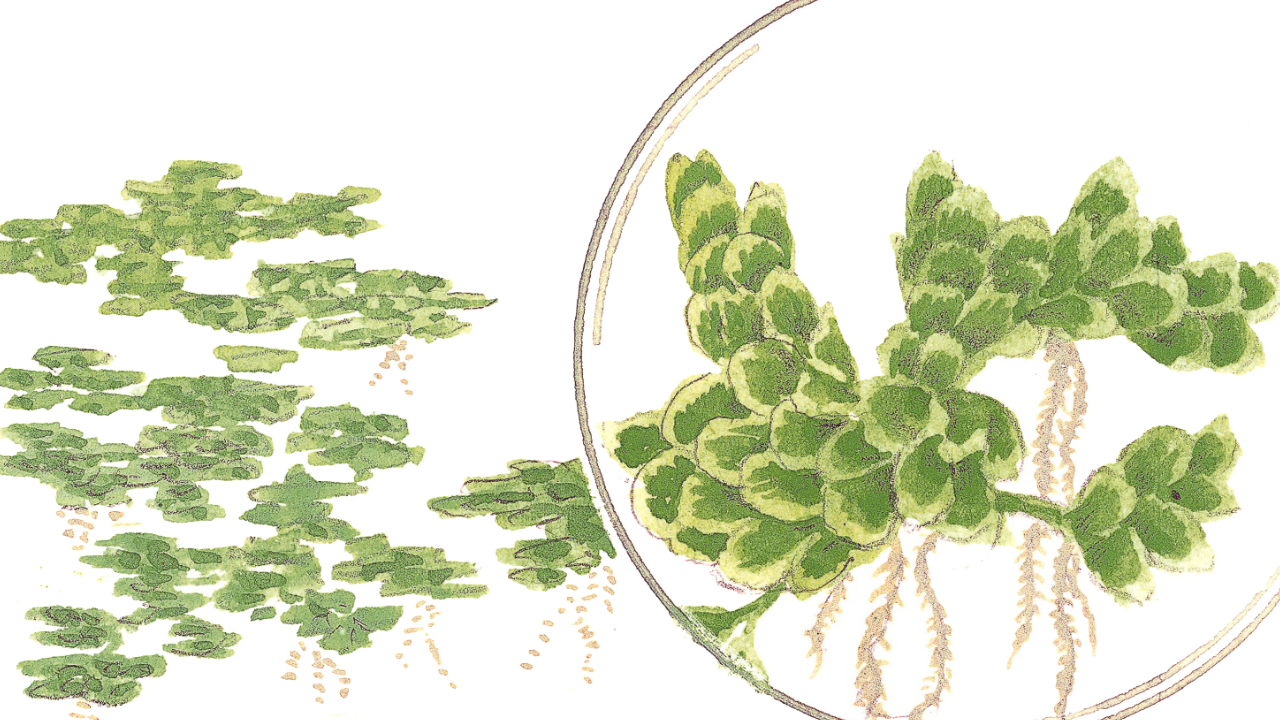Fantastic Floaters

Nothing can compare to a planted aquarium in the world of freshwater aquaria. It’s the equivalent of a reef tank versus a fish only marine display. While fish only displays can be stunning, mostly what we crave is to have an accurate, natural appearing habitat that captures our imagination, and allows the animals to not only live as naturally as possible but thrive as they would in the same setting in the wild. Planted aquariums while an attainable goal for anyone who decides to put forth the energy and research with a little dedication and time, can be an intimidating step. What if the fish uproot these plants or worse, eat them? What if my lights, or substrate, or nutrients in the water aren’t correct? Do I need to add carbon dioxide supplementation to grow these plants? Fortunately, there’s an easy way to dip one's toes into growing some freshwater aquatic plants with low commitment and no need to add fertilizer, change substrates, or even change lights (most likely). Enter floating plants. The most basic advantages here are that they block light – helping to inhibit algae growth and make your fish feel more secure, remove nutrients – also reducing nuisance algae growth and helping to maintain a healthier environment, and some of them can even be used as a good source of food for some fishes in a fish room! Floating plants can thrive because they have constant access to carbon dioxide in our homes, have better access to light (meaning that even some dimmer aquarium lights will be enough for simple floating plants), and their leaves are above the water so there’s no need to be concerned or have to deal with algae issues that drive some people out of the planted aquarium hobby before they have even really gotten started. Let’s discuss a few of these and see what fits for you and your aquarium!

Duckweed (Family Araceae, Subfamily Lemnoideae) comes from the same family as the other common aquarium plant Anubias sp. While the later is a much more suitable representation of the family, and Duckweed may actually belong in a family of its own, both of these plants are part of a lineage that we can trace all the way back to at least the early cretaceous through the fossil record. Some species of Duckweed in Asia are grown or harvested for their high protein content – which can reach 40% under the right circumstances and used as food! Duckweed is farmed in Israel and is being researched for its ability to clean contaminated water and as a food source in potential deep space exploration. It is the smallest plant on the planet – with members as small as a few millimeters. Duckweed in the wild thrives in locations where there is little or no flow – and appreciates the same in the aquarium. If the surface is moving too much, they will not be able to thrive, so it’s a prime candidate for calm surfaces or filtration methods such as sponge filters and airstones. Overall, Duckweed is probably the easiest of all aquatic plants to keep, even amongst floating plants which generally are pretty fool proof. While there may be some concerns in regards to contamination the easiest way to source Duckweed is to go to a local pond – you are almost sure to find some there. Once added to the aquarium, given the bare minimum of proper conditions it is likely to spread and dominate the entire surface. They are so effective at this that in some places they are known to be invasive to the point of choking out other native species. Duckweed can easily be scooped from the surface of aquariums to remove the nutrients they have taken from the water column – making your aquarium cleaner and also potentially providing a food source. While we wont advise that you eat Duckweed from your fish room – other fish might enough it. North American native fish are known to eat it, gold fish and other herbivorous fish enjoy it, and its great for them as well! Duckweed is easy to grow, and easy to find. Most fish clubs or groups will have at least one person with enough Duckweed to share.
 Frogbit (Limnobium laevigatum) is a South American native plant. It can grow to be fairly large – sending down long roots and spreading densely across the surface of the water. It can cause some issues similar to what Duckweed can do when it becomes invasive: choking out native plants, decreasing light penetration for other aquatic plants and limiting gas exchange. However in the aquarium we are rarely reliant upon surface disturbance as the sole source for aeration – and any issues that might arise would be easily prevented with an airstone or sponge filter. It has virtually the same perks as well – blocking light and quickly absorbing nutrients that otherwise would lead to nuisance algae growth within the aquarium. Frogbit reproduces via flowers and seeds but in the aquarium will mostly spread through stolons (a stem that will form roots at intervals to form new plants) upon which smaller versions of the mother plant will appear. These can form one larger, connected plant but can also break off forming other independent plants. As with all aquarium specimens, care should be taken to make sure that Frogbit is never introduced to the wild, being both an aquarium species that could be harboring non-native diseases or other issues and also because of its potentially as an invasive species.
Frogbit (Limnobium laevigatum) is a South American native plant. It can grow to be fairly large – sending down long roots and spreading densely across the surface of the water. It can cause some issues similar to what Duckweed can do when it becomes invasive: choking out native plants, decreasing light penetration for other aquatic plants and limiting gas exchange. However in the aquarium we are rarely reliant upon surface disturbance as the sole source for aeration – and any issues that might arise would be easily prevented with an airstone or sponge filter. It has virtually the same perks as well – blocking light and quickly absorbing nutrients that otherwise would lead to nuisance algae growth within the aquarium. Frogbit reproduces via flowers and seeds but in the aquarium will mostly spread through stolons (a stem that will form roots at intervals to form new plants) upon which smaller versions of the mother plant will appear. These can form one larger, connected plant but can also break off forming other independent plants. As with all aquarium specimens, care should be taken to make sure that Frogbit is never introduced to the wild, being both an aquarium species that could be harboring non-native diseases or other issues and also because of its potentially as an invasive species.
 Red Root Floaters (Phyllanthus fluitans) is another South American native widespread throughout that continent. It reaches less than two inches fully grown and under good conditions will produce beautiful tiny little white and yellow flowers. While it can reproduce by seed – in the home aquarium it will reproduce by creating smaller versions of mother plants that eventually break away on their own. Probably the most beautiful of the three plants we have discussed, under bright light its leaves and roots will take on a reddish hue – which sets it apart from almost any other readily available floating plant in the aquarium hobby today. Red Root Floaters are probably the most demanding of the three, wont get as large as Frogbit or form as impressive of a root structure, but are truly beautiful and an easily attainable goal for any aquarist.
Red Root Floaters (Phyllanthus fluitans) is another South American native widespread throughout that continent. It reaches less than two inches fully grown and under good conditions will produce beautiful tiny little white and yellow flowers. While it can reproduce by seed – in the home aquarium it will reproduce by creating smaller versions of mother plants that eventually break away on their own. Probably the most beautiful of the three plants we have discussed, under bright light its leaves and roots will take on a reddish hue – which sets it apart from almost any other readily available floating plant in the aquarium hobby today. Red Root Floaters are probably the most demanding of the three, wont get as large as Frogbit or form as impressive of a root structure, but are truly beautiful and an easily attainable goal for any aquarist.
Consider floating plants as an easy way to manage light and nutrients in the home aquarium. Fish will feel more at home without the direct glare of our intense aquarium lights, algae will struggle to compete with less light and fewer nutrients, and in the case of Duckweed – you might even end up with some nutritious treats for larger fish!